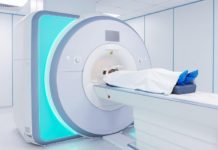St. Jude Medical, Inc announces New Data Showcases the Long-Term Clinical Benefits of the Nanostim Leadless Pacemaker Compared to Traditional Pacemakers
Three presentations at the 2016 Heart Rhythm Society Annual Scientific Sessions highlight the retrievability of the Nanostim™ leadless pacemaker, the absence of certain complications associated with the Nanostim leadless pacemaker vs. traditional pacemakers with leads, and improved quality of life for patients
St. Jude Medical, Inc a global medical device company announced new data presented at the Heart Rhythm Society's (HRS) 37th annual scientific sessions that highlight the long-term safety of the retrievability of the Nanostim™ leadless pacemaker, the world’s first commercially approved leadless pacemaker. Two additional presentations also showed that the Nanostim leadless pacemaker is associated with reduced rates of acute and mid-term complications compared to traditional pacemakers with leads and can improve quality of life for patients. Together these studies add to the growing body of evidence about the safety and efficacy of the Nanostim leadless pacemaker.
The option to be able to retrieve a leadless pacemaker over time is important for patients with changing medical conditions which may necessitate removal of implanted devices. New data presented at HRS 2016 demonstrated that within the LEADLESS II IDE study and the LEADLESS Observational Study acrossEurope, the Nanostim leadless pacemaker was successfully retrieved in 14 patients up to 3.2 years post-implantation without any serious adverse events.
“Device retrieval is a desirable feature of implanted leadless pacemakers because it offers physicians options in the future so that we can provide optimal care for our patients,” said Dr. Vivek Reddy, primary investigator of the LEADLESS II study and the director of electrophysiology from Mount Sinai Hospital inNew York, NY. “We’ve now shown that for patients requiring device upgrades or new leadless pacing options, late retrievability—even up to three years—is possible with the Nanostim leadless pacemaker.”
In two additional clinical presentations, data showed fewer acute and mid-term complications with the Nanostim leadless pacemaker compared to traditional transvenous pacemakers and improved quality of life immediately after implant and over time.
In a new analysis from LEADLESS II study data and real-world claims data from the Truven Health MarketScan® database, which tracks U.S. health care claims and Medicare supplemental insurance encounters, an international group of researchers found that the Nanostim leadless pacemaker resulted in fewer complications in both the first month post-implant as well as in the first two years post-implant. The data also demonstrated a growing benefit over time with patients receiving a leadless pacemaker, showing a clear advantage in combating infections and lead-related adverse events.
“We are extremely pleased to see these three presentations provide additional insight into the potential benefits associated with the Nanostim leadless pacemaker,” said Dr. Mark Carlson, vice president of global clinical affairs and chief medical officer at St. Jude Medical. “The Nanostim leadless pacemaker has been available to patients in Europe since 2013 and we continue to work with the FDA to bring the Nanostim leadless pacemaker to the U.S. market to ensure broad patient access to this important therapy.”
About the Nanostim™ Leadless Pacemaker
A pacemaker is a small implantable device that sends electrical pulses to the heart to treat bradycardia, a condition in which the heart rate is too slow. These devices monitor the heart and provide electrical stimulation when the heart beats too slowly for each patient's specific physiological requirements. Leadless pacemakers provide the same type of therapy but do so without the traditional leads found in conventional pacemakers.
The Nanostim leadless pacemaker operates like a traditional pacemaker, but is 10 percent the size of a conventional pacemaker. Implanted via the femoral vein with an 18 F introducer, the smallest available for a leadless pacemaker, the device offers patients a minimally-invasive option for pacemaker delivery, potentially reducing overall complications including device-related infection of the pocket and lead failure. The Nanostim leadless pacemaker received CE Mark approval in August 2013. To date, more than 1,100 Nanostim leadless pacemakers have been implanted worldwide. The Nanostim leadless pacemaker is undergoing a clinical study in the U.S. under an FDA-approved investigational device exemption.
About St. Jude Medical
St. Jude Medical is a leading global medical device manufacturer and is dedicated to transforming the treatment of some of the world's most expensive epidemic diseases. The company does this by developing cost-effective medical technologies that save and improve lives of patients around the world. Headquartered in St. Paul, Minn., St. Jude Medical employs approximately 18,000 people worldwide and has five major areas of focus that include heart failure, atrial fibrillation, neuromodulation, traditional cardiac rhythm management and cardiovascular. For more information, please visit sjm.com
St. Jude Medical, Inc.
Investor Relations:
J.C. Weigelt, 651-756-4347
jweigelt@sjm.com
or
Media Relations:
Gina O'Connell, 651-756-3380
Goconnell02@sjm.com





















